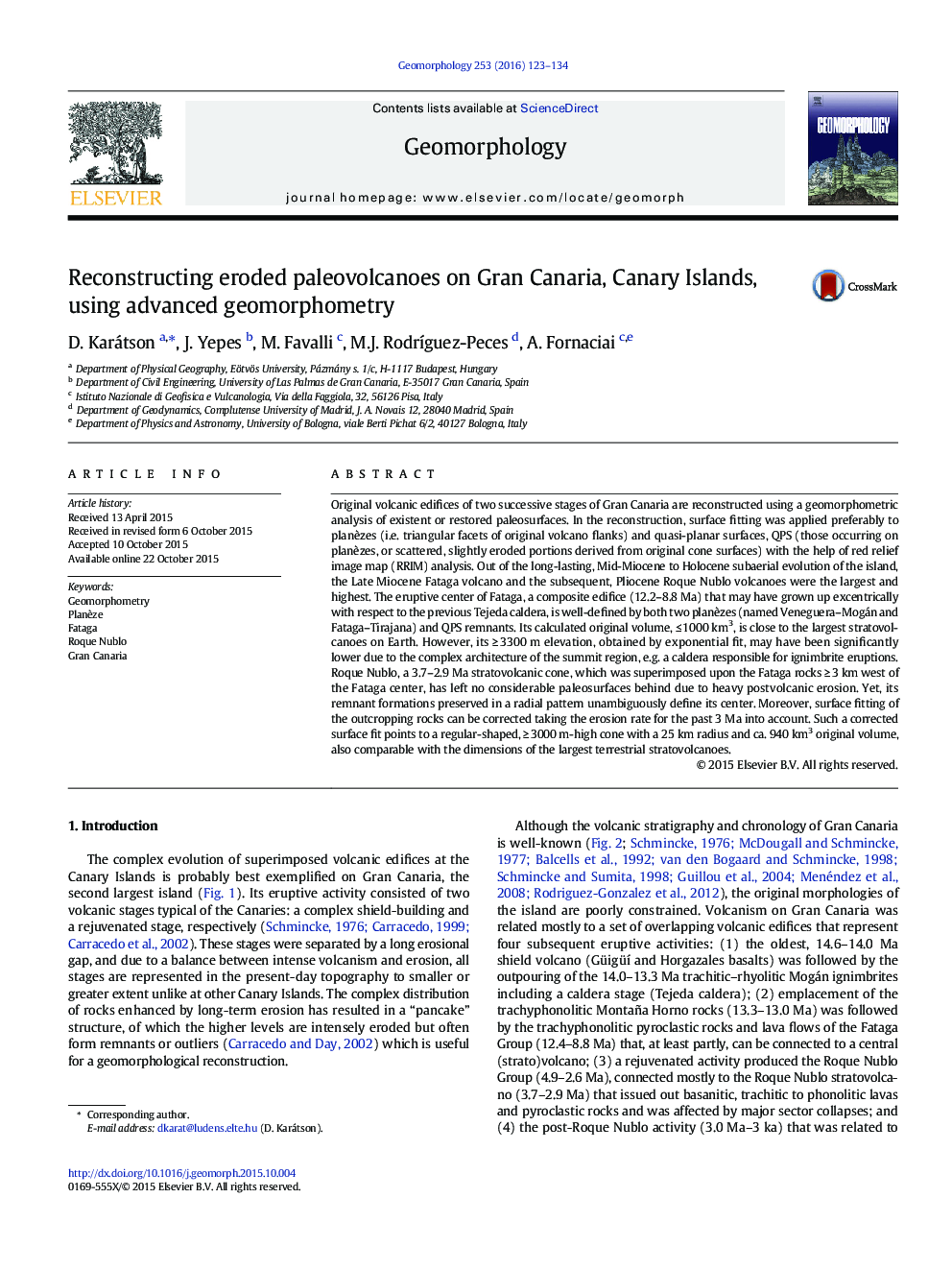| کد مقاله | کد نشریه | سال انتشار | مقاله انگلیسی | نسخه تمام متن |
|---|---|---|---|---|
| 6431681 | 1635396 | 2016 | 12 صفحه PDF | دانلود رایگان |
- Miocene-Pliocene volcanic edifices of Gran Canaria can be reconstructed by morphometry.
- Paleosurfaces (planèzes and quasi planar surfaces) are a useful tool in reconstruction.
- Fataga and Roque Nublo volcanoes had at least 900Â km3 original volume each.
Original volcanic edifices of two successive stages of Gran Canaria are reconstructed using a geomorphometric analysis of existent or restored paleosurfaces. In the reconstruction, surface fitting was applied preferably to planèzes (i.e. triangular facets of original volcano flanks) and quasi-planar surfaces, QPS (those occurring on planèzes, or scattered, slightly eroded portions derived from original cone surfaces) with the help of red relief image map (RRIM) analysis. Out of the long-lasting, Mid-Miocene to Holocene subaerial evolution of the island, the Late Miocene Fataga volcano and the subsequent, Pliocene Roque Nublo volcanoes were the largest and highest. The eruptive center of Fataga, a composite edifice (12.2-8.8 Ma) that may have grown up excentrically with respect to the previous Tejeda caldera, is well-defined by both two planèzes (named Veneguera-Mogán and Fataga-Tirajana) and QPS remnants. Its calculated original volume, â¤Â 1000 km3, is close to the largest stratovolcanoes on Earth. However, its â¥Â 3300 m elevation, obtained by exponential fit, may have been significantly lower due to the complex architecture of the summit region, e.g. a caldera responsible for ignimbrite eruptions. Roque Nublo, a 3.7-2.9 Ma stratovolcanic cone, which was superimposed upon the Fataga rocks â¥Â 3 km west of the Fataga center, has left no considerable paleosurfaces behind due to heavy postvolcanic erosion. Yet, its remnant formations preserved in a radial pattern unambiguously define its center. Moreover, surface fitting of the outcropping rocks can be corrected taking the erosion rate for the past 3 Ma into account. Such a corrected surface fit points to a regular-shaped, â¥Â 3000 m-high cone with a 25 km radius and ca. 940 km3 original volume, also comparable with the dimensions of the largest terrestrial stratovolcanoes.
Journal: Geomorphology - Volume 253, 15 January 2016, Pages 123-134
